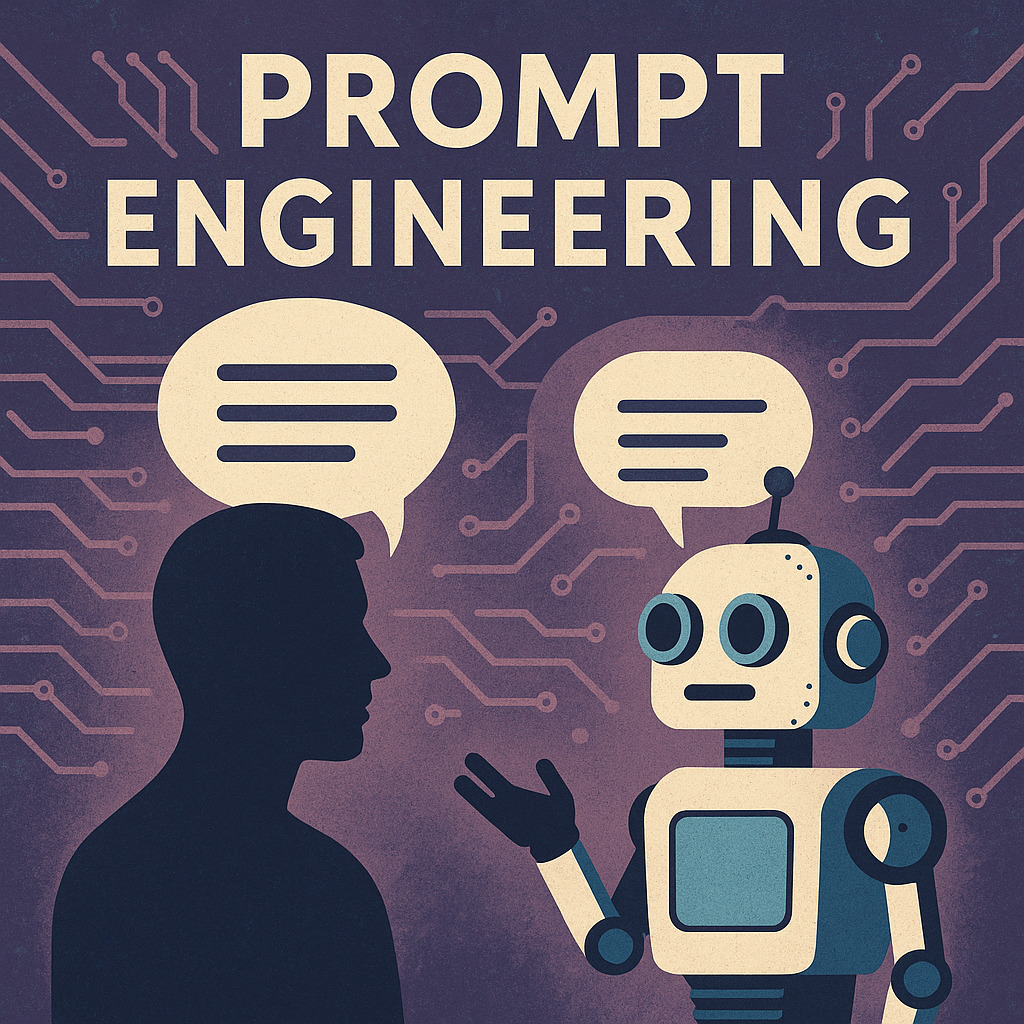Prompt Engineering: The Hidden Art of Talking to AI
🌟 Introduction
In recent years, we’ve learned to chat with artificial intelligence as if it were a personal assistant, a creative partner, or even a virtual friend. But behind this seemingly simple exchange lies a surprisingly complex skill: prompt engineering. It’s not magic, nor some alien language — it’s the art of writing the right requests to get accurate, useful, and creative answers from AI.
📜 Origins: When the Prompt Was Just a Command
The word “prompt” predates ChatGPT by decades. In old computers, the prompt was the blinking cursor waiting for a user’s command line input. Then came conversational AI, and the meaning shifted: no longer just a technical signal, but a bridge between human language and machine language.
🧩 The Birth of Prompt Engineering
With the rise of early language models like GPT-2 and GPT-3, people realized that the quality of the answers depended heavily on how the question was asked. A single word or change in sentence structure could completely alter the output. Thus was born prompt engineering: a practice blending logic, creativity, and psychology to “teach” AI what we really want.
🎨 More Art Than Science
Prompt engineering is not just a technical skillset. It’s like writing a script for an actor who improvises: if the instruction is vague, the performance will be uncertain; if it’s clear and vivid, the result can be breathtaking. In this sense, the prompt engineer is part screenwriter, translator, and strategist.
💡 Concrete Prompt Engineering Examples
🎭 1. Role Prompting
Assign a persona to guide the tone and depth of the response:
Prompt: “You are a world-famous chef explaining molecular gastronomy to a teenager.”
🧠 2. Chain-of-Thought Prompting (CoT)
Encourage step-by-step reasoning for complex tasks:
Prompt: “Q: If a café had 23 apples, used 20 to make lunch, and bought 6 more, how many are left? Let’s think step by step.”
📚 3. Few-Shot Prompting
Provide examples to guide the model’s style or format:
Prompt:
“Translate to French:
English: 'Hello' → French: 'Bonjour'
English: 'Cat' → French: 'Chat'
English: 'Dog' → French:”
📝 4. Context + Specificity + Format
From Anthropic’s guide, a structured prompt to reduce errors and hallucinations:
Prompt:
“You are a financial planner. Summarize my monthly budget, include bullet points, and cite any assumptions.”
🔄 5. Iterative Refinement & Tone Control
Professional prompt engineers suggest:
-
Use role prompting, e.g., “act as a polite support representative.”
-
Apply chain-of-thought: “explain step by step.”
-
Include few-shot examples.
-
Iterate: refine based on output.
-
Set tone: “Write it with formal tone.”
🛒 6. Everyday Practical Prompt Refinement
Even for a simple task, being specific matters:
Prompt: “Create a 150-word product description for a bamboo fiber towel set that emphasizes eco-friendly benefits, durability, and softness. Include a call-to-action encouraging eco-conscious living.”
👨💻 Do We Still Need Prompt Engineers Today?
With modern AI models becoming more intuitive, is expertise still necessary? The answer: yes, especially for complex and scalable tasks. Experts know how to craft prompts that produce consistent, reliable, repeatable outcomes.
🚀 The Future of Human–AI Dialogue
Prompt engineering might evolve in two ways:
-
Fade away, as AI becomes intuitive enough to understand generic queries.
-
Specialize, becoming a professional role—a kind of “language architect” designing AI conversations for businesses, institutions, and more.
🧭 Conclusion: A New Digital Literacy
Prompt engineering is the first real grammar for talking to machines. Even if the techniques eventually simplify, the core lesson remains: how we ask defines what we get—true in conversations, both human and AI.








Leave a Comment